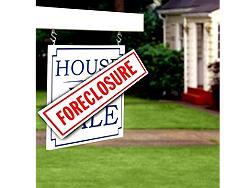Unemployment Rising Factor in Foreclosures
Washington, DC, June 30, 2009--Rising unemployment is the latest factor in the current wave of foreclosures, which is complicating Washington's effort to stabilize the housing market.
The first wave of foreclosures was driven by borrowers who took out subprime mortgages and other risky loans that became unaffordable, causing them to fall behind on their monthly payments.
But the current wave is increasingly driven by unemployment.
The Obama administration's foreclosure-prevention plan was built around the subprime crisis, not unemployment, said Michael van Zalingen, director of homeownership services for the nonprofit Neighborhood Housing Services of Chicago.
The Obama program provides financial incentives to mortgage-servicing companies and investors to reduce mortgage-related payments to 31% of monthly income.
But many borrowers don't have sufficient income to qualify for a loan modification under the plan.
Many of those unqualified borrowers suffered job losses or a reduction in income. Roughly 27% of borrowers who called the mortgage industry's national "Hope Hotline" in the second quarter of 2009 cited unemployment as the primary or secondary reason for their mortgage problems, up from 9.7% in the second quarter of 2008.
The administration is considering making changes to the loan-modification program to address the current employment picture.
"We recognize that unemployment is a significant complicating factor," said Deputy Assistant Treasury Secretary Seth Wheeler. "We are studying what more we can do."
One possibility is a forbearance plan that allows borrowers to hold off from making mortgage payments for several months while they look for work. But there are no specific guidelines for determining who should get forbearance and for how long.
Several Federal Reserve economists, meanwhile, have suggested the government pay a share of the mortgage payment, for a limited time, for borrowers who see a significant disruption in their income.
